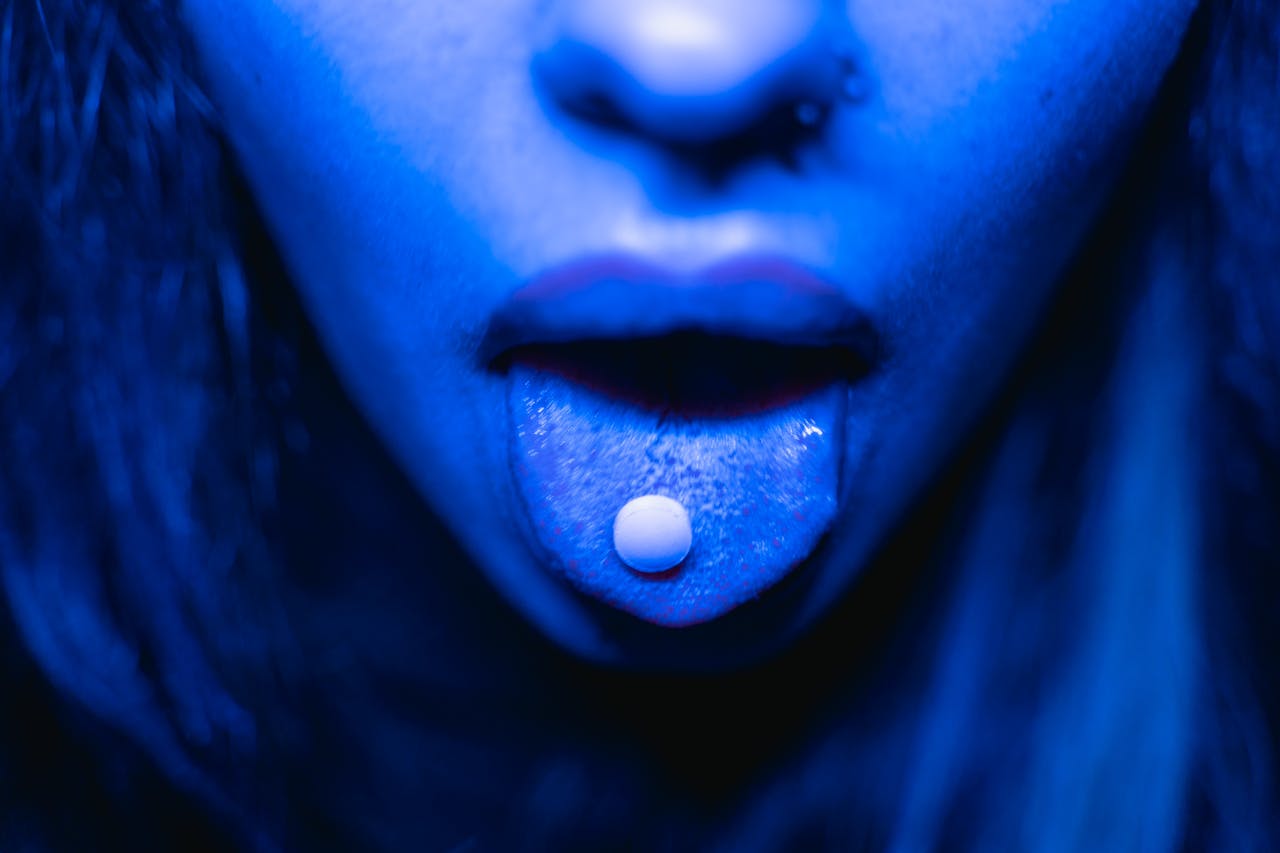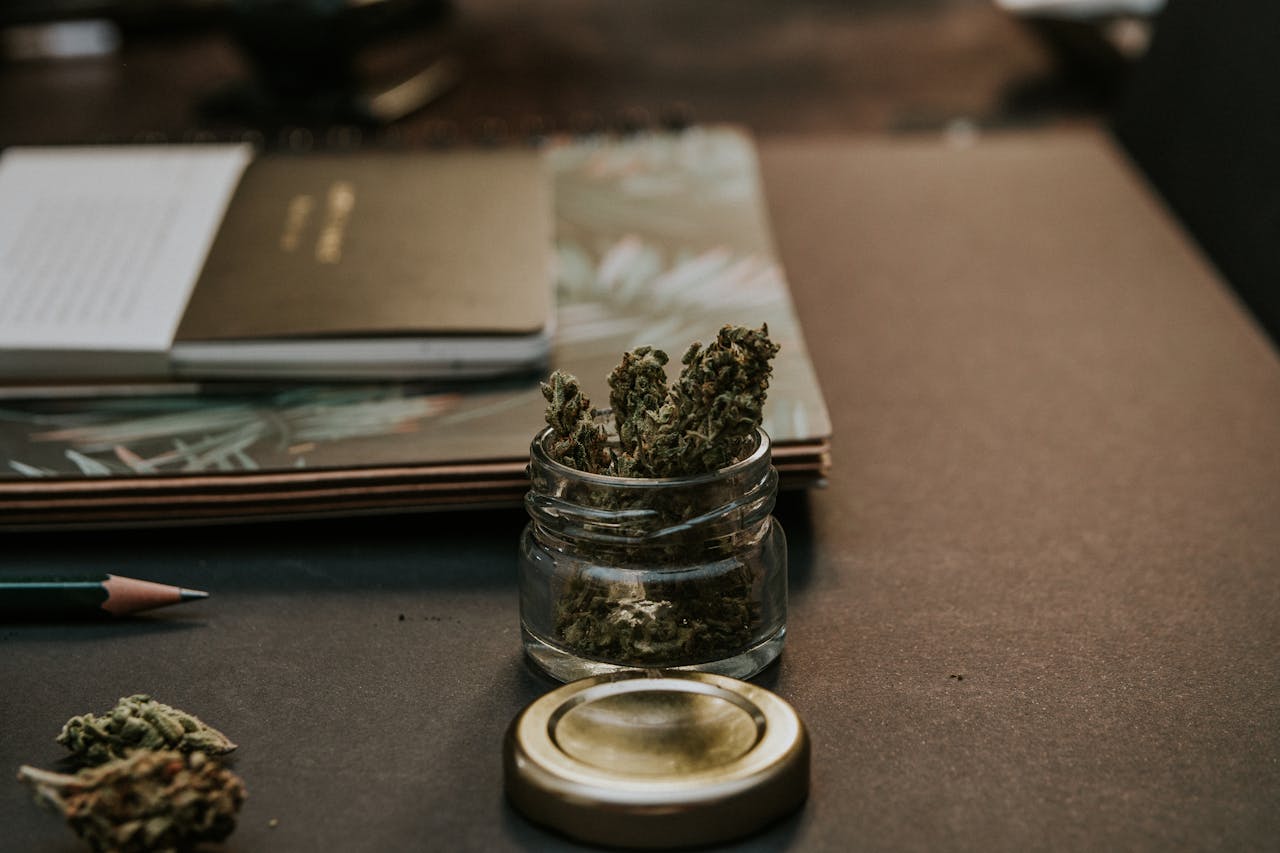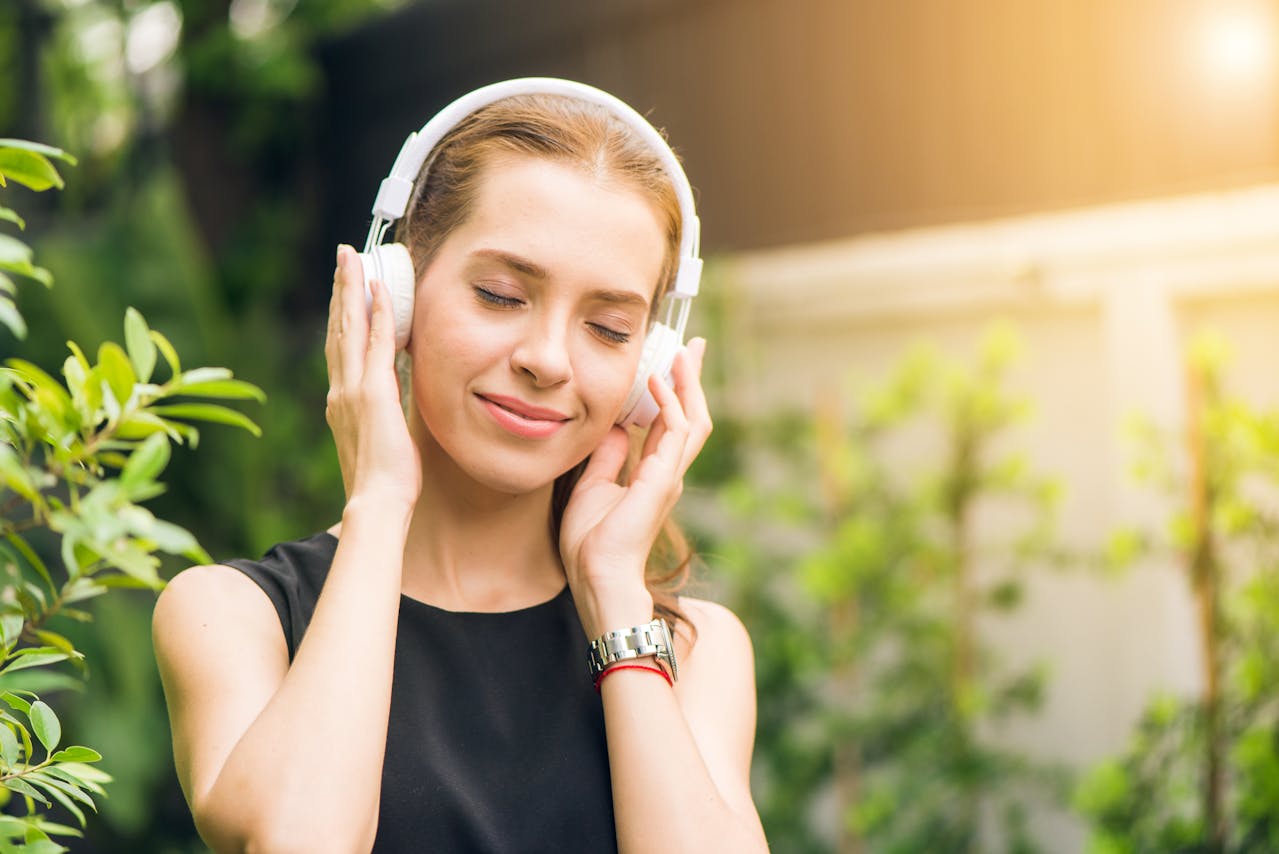How To Get High Without Drugs?
How to get high without drugs is a question that often intrigues individuals seeking alternative means of achieving euphoria or altered states of consciousness. Exploring ways to get high without drugs involves delving into various natural methods and lifestyle choices.
Author:Buttskin FamilyReviewer:Caden SteelheartFeb 20, 2024279 Shares92.8K Views

The euphoria that comes from consuming illegal narcotics is one of its main draws. Those who struggle with addiction are always that high. It might be challenging for someone how to get high without drugs.
Regrettably, it's the reason why so many individuals relapse. The good news is that you don't have to use drugs or alcohol to get the same high you may have experienced while using those illegal substances since there are natural methods to attain it. Here is a list of potential natural high-achieving methods that don't include drugs!
1. Exercise
Since it's one of the most well-researched natural highs, exercise is the most often suggested option. There is more to the "runner's high" than just jogging. After 20 to 30 minutes of exertion, endorphins may be released from any moderate-to-high-intensity workout.
The term "endogenous morphine" is a contraction of "endorphins." "Endogenous" refers to substances that are created inside the body, and "morphine" describes how these substances reduce tension and pain in a manner that is comparable to that of morphine and other opioid medications.
The problem is that, despite its advantages, low-intensity exercise is insufficient to cause endorphin release. Exercise hard because your body has to be pushed before it can release these hormones.
Try to keep your speed at a level where you can still breathe. If not, you may be able to carry on a conversation but not a song. Before you can maintain this speed, you may need to exercise for a month or two at a lesser intensity if you're new to exercising.
2. Running
Running doesn't need a lot of equipment, a gym membership, lessons, or particular training. All you need for this kind of workout is a safe path and a nice pair of shoes. Research indicates that running releases endocannabinoids in the brain in addition to endorphins.
These have an impact similar to that of cannabis's psychoactive ingredient, THC. Start with a couch to 5k program to ease yourself into this workout, since many aspiring runners go too fast. You may consistently feel your "runner's high" every day if you give it enough time.
3. Dancing
Dancing is a fantastic substitute for dull jogging as it offers both intense cardio activity and cerebral stimulation. Many medications provide a euphoric, low-inhibition state that encourages individuals to dance.
Alternatively, dancing when sober may be a very effective method of reducing stress and separating oneself from addiction.
4. Groups Exercise Class
Taking a group fitness class might assist you in reaching the moderately strenuous activity levels required for endorphin release. It could be simpler to keep up with the teacher and other participants in a fast-paced environment than it is to endure pain on your own.
5. Laughter
Laughing is a simpler approach to produce endorphins and the neurotransmitters dopamine and serotonin. A good belly laugh is more likely to leave you feeling elevated than a little giggle.
Having a collection of comedic routines and films that are sure to make you laugh may add hearty laughs to your day.
5. Building Friendships
For those who are recovering from addiction, forming new social networks is a major obstacle. Being near friends who continue to use drugs might significantly raise your chance of relapsing.
Increasing your social circle is an excellent strategy to increase dopamine and serotonin levels in your brain. You may extend your horizons and make valuable human relationships that won't jeopardize your sobriety by joining groups, volunteering, or even participating in an online community.
6. Eating Spicy Foods
The compound in chili peppers that causes a burning sensation on the lips and tongue is called capsaicin. It alerts the brain when you ingest something really hot, like boiling liquid, by binding to heat receptors.
You may be able to tolerate more spicy food over time and come to love this feeling. But it's still really taxing to your brain. Similar to intense exercise, stress triggers the production of endorphins, which, if the meal is sufficiently spicy, may result in a significant and prolonged high.
7. Meditation
A common cause of drug abuse among many individuals is an effort to self-medicate for underlying mental health issues. Although it can't replace mental health treatment, meditation may assist manage a number of these disorders without the need for alcohol or pharmaceuticals.
Every day, only five minutes of guided meditation may help you overcome negative intrusive thoughts and produce relaxing chemicals in your brain.
8. Yoga And Moving Meditation
Sitting still is not necessary for meditation. Exercise that releases endorphins and mindfulness may be combined in a yoga lesson. When meditation is combined with physical activity and mental stimulation, many individuals find it easier to develop the habit.
9. Completing Meaningful Tasks
The brain's pleasure chemical, dopamine is produced when a variety of worthwhile actions are finished. If you've ever had a natural dopamine high—for example, feeling relieved or even euphoric after landing a job or tidying up a neglected space.
Doing Good Deeds For Friends And Family
An addict may become estranged from positive social networks in their life. Rebuilding these ties and achieving a constructive high may both be facilitated by cooking meals or completing tasks for friends and family.
Starting A Creative Pursuit
Healthily processing intense emotions may be facilitated by directing them into an artistic endeavor. Endorphins are also released in the brain when you review your accomplishments or listen to a new instrument you've learned.
Holding Down A Job
While many addicts can hide their issues from others in their everyday lives, addiction causes other individuals to lose their jobs and money. Although coming to work may not be enjoyable, being able to maintain a job in your industry can boost self-worth and produce feel-good chemicals in the brain.
Volunteering
In addition to fostering new connections, volunteering your time and energy for charity projects may provide a dopamine rush from feeling you accomplished something worthwhile.
10. Travel And Adventure
When money is being used to support an addiction, it is often not feasible to afford to take a vacation. Spending money on recreational activities that enhance your life and provide a natural high is one advantage of sobriety.
Sunshine And Relaxation
The same endorphins released after intense activity are also stimulated by UV rays from the sun. Selecting a meditation retreat may assist you in reliving the bliss of a trip and incorporating the same relaxing techniques into your regular life.
Extreme Sports
Conversely, intense sports like ziplining, roller coasters, and surfing provide a strong burst of norepinephrine, the fight-or-flight hormone released in the brain by many stimulants like cocaine and methamphetamine.
Adverse stimulants cause the body to remain in a fight-or-flight state for longer than is safe, whereas a natural adrenaline surge eventually wears down without endangering the vital organs.
11. Performing In Front Of An Audience
Endorphins and other feel-good chemicals may be released into the brain under healthy stress conditions, which provides a natural high. One such circumstance is performing in front of an audience of a large number of people. You may make new acquaintances and get a surge of adrenaline by overcoming stage fear.
Trying Stand-Up
In the world of entertainment, humor is often said to be equal to tragedy plus time. This implies that if you present difficult memories from your past in a lighthearted manner, they may be altered. Even the worst personal traumas may be transformed into compelling and humorous stand-up routines by comedians like Tig Notaro.
Going To Booth Karaoke
Drinking a lot of drinks and falling back into old habits are two risks associated with karaoke nights at bars. But without the stresses of a big crowd or a bar atmosphere, private karaoke booths enable you and a few pals, or even just one person, to sing along for an endorphin rush.
Sharing Written Work
If performing on stage scares you too much, think about sharing a poem or a tale with friends or in a writer's group that emphasizes positivism. Receiving compliments on one's creative work is a fantastic way to experience a natural high that lasts for many days.
13. Listening To Music
Not every natural high demands a great deal of dedication or work. Dopamine, serotonin, and endorphins are released into the brain just by listening to one's favorite music.
Play your favorite songs on repeat to get an additional dopamine boost while you work on a challenging task or prepare a nutritious dinner.
14. Occasional Treats
Food has a strong emotional impact on the brain. Even while it's not a good idea to substitute the high from drugs with the boost from high-fat or high-sugar meals, a package of chocolate chip cookies is still preferable to an addictive narcotic.
If you sometimes need a natural mood lift, it's OK to overindulge in sweets and your favorite meals.
15. Acupuncture
Needles are inserted into the skin at certain pressure points in the body during the ancient medical practice of acupuncture. Although the thought of being poked with needles might be unsettling, there's no need to be cautious about this procedure.
It naturally lowers pain levels throughout the body, releases endorphins, and isn't uncomfortable, according to clinical research.
16. Adopting A Pet
A lot of the naturally occurring highs on this list don't need significant, ongoing commitments, like pet adoption. It is crucial to make sure you are prepared and have solid groundwork before assuming responsibility for an animal's existence. Adopting a pet to celebrate their sobriety, however, may help many individuals in recovery from addiction feel better every day and hold them more responsible.
Feeding, exercising, or providing other care for a pet releases dopamine in the same way as taking care of your responsibilities and chores does. Serotonin is released in the brain by caressing or cuddling a dog or cat. Being aware that someone else is dependent on you might be a strong incentive to maintain sobriety.
The Science Behind Getting High Without Drugs
While many people get hooked on the chemicals that may give them that high, not everyone is eager to get high. The National Institute on Drug Abuse states that there are several reasons why individuals take drugs:
- to be content
- to put an end to negative emotions
- To go away
- to do better in the workplace or school
- To satisfy an inquisitive mind
- to blend in with peers
Though there are several more explanations, it's crucial to keep in mind that drug use for recreational purposes might result in addiction. This is because your brain gradually becomes used to the feel-good effects of booze and narcotics, whether they are prescribed or illegitimate.
To regain that sensation, you start using drugs more often or in bigger doses as a reaction. Substance use disorder (SUD) may send you into a downhill spiral quickly, increasing your risk of overdosing and even dying.
Thankfully, getting high naturally may be achieved in various ways. Similar to drug usage, these behaviors cause the brain's reward region to generate "happy hormones." Your energy and mood are thus increased, allowing you to feel good without running the danger of abusing drugs or alcohol.
Frequently Asked Questions
Is It Possible To Get High Without Drugs?
Yes, many ways not to use drugs to get up.
Do Activities Other Than Drugs Trigger These Pathways?
Other than medicines, a variety of actions and feelings may activate reward circuits. The great majority of them are helpful, although some are harmful. None of the unhealthy options are quite as harmful as drugs.
What Causes The Feeling Of A High?
It's crucial to first define what a "high" really is. Many pharmacological effects result in a wide range of experiences that are all grouped under this heading.
Conclusion
A desire for thrilling and high-risk activities is believed to be a contributing factor in the cases of people being "turned onto drugs." Nonetheless, some people turned to seemingly exhilarating and dangerous pastimes as an alternative to medicines.
Most people think that doing drugs is how someone gets high when they speak about it. How to get high without drugs or external substances, and there are several ways to take advantage of the body's natural processes.
Jump to
1. Exercise
2. Running
3. Dancing
4. Groups Exercise Class
5. Laughter
5. Building Friendships
6. Eating Spicy Foods
7. Meditation
8. Yoga And Moving Meditation
9. Completing Meaningful Tasks
10. Travel And Adventure
11. Performing In Front Of An Audience
13. Listening To Music
14. Occasional Treats
15. Acupuncture
16. Adopting A Pet
The Science Behind Getting High Without Drugs
Frequently Asked Questions
Conclusion

Buttskin Family
Author
The Buttskins are a crazy author family who love writing, laughter, and eating an unhealthy amount of junk food. Mom Rockita started scribbling stories as soon as she could hold a pen, and Dad John didn't realize authoring children's books was a real job until after they were married.
Their kids have embraced storytelling at an early age. Little Lucy, age 5, dictates her colorful tales about dragons and princesses to her parents. Her 8-year old brother Jake collects scraps of paper to diagram his latest imaginary adventure involving ninjas and dinosaurs.

Caden Steelheart
Reviewer
Caden Steelheart, an enigmatic author, weaves tales that immerse readers in the depths of sin city's underbelly. With his words as a weapon, he crafts literary masterpieces that reflect the dark and dangerous spirit of the city. Caden's writing captures the gritty essence of sin city, delving into the intricacies of its characters and the moral complexities that define their existence.
Born amidst the shadows, Caden draws inspiration from the relentless chaos and unforgiving nature of the city. His words carry the weight of experience, creating a vivid and haunting portrayal of sin city's undercurrents. Through his stories, he explores the blurred lines between right and wrong, exploring themes of power, deception, and redemption.
Caden Steelheart's literary prowess has made him a name whispered in literary circles, captivating readers with his ability to immerse them in sin city's intricately woven tapestry. With each written word, he invites readers to journey into the darker realms of the human experience, offering them a glimpse into the secrets and sins that shape the city's inhabitants. Caden Steelheart, a master of capturing the essence of sin city through his writing, continues to captivate audiences with his haunting and evocative narratives.
Latest Articles
Popular Articles


